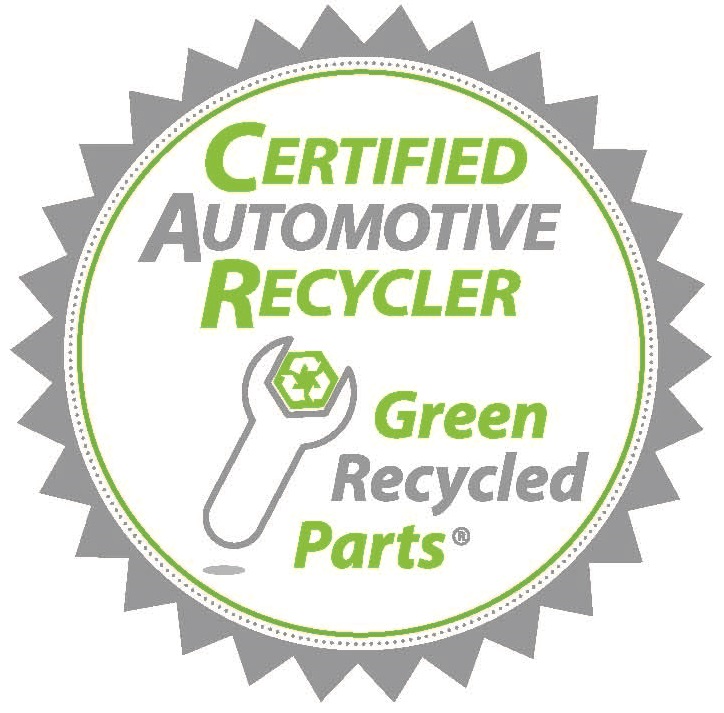While we have tried to present a summary of the essential information on this topic, be aware that other items, such as local regulations, may apply to you. Please read the disclaimer.
What You Need to Know
Wash water or wastewater from water-based parts cleaning can create many issues at an automotive salvage facility depending on the style of washing and the method of disposal.
Wastewater may be generated from an enclosed cabinet washer that uses hot soap and water to blast off grease and grime much like a dishwasher. A sink-top aqueous parts washer similar to a solvent-based parts washer may be used with the technician cleaning the part by hand with a spigot, wand or brush in a flow-over style in a sink basin. By far most common style of water washing parts is using a power washer for large parts. Each of these parts washing styles create compliance issues for waste management and disposal.
Adding to the complexity of water washing parts is the discharge method. A facility on city sewer will have more and possibly less expensive options for disposal of wastewater than a shop on septic system. Also sludge accumulated from the washing process as sump sludge in a catch basin is also a regulated waste to be managed. Outdoor power washing on the ground is not acceptable and is a violation of the Clean Water Act for wastewater disposal and the storm water permit.
Disposal methods basically include 1) those on city sewer and 2) those on septic systems.
Septic systems are for sanitary waste only. Acceptable discharge from an automotive salvage facility would include wastewater from the bathroom such as toilet and sink discharge, kitchen sink and other hand washing stations and mop water. Commercial wastewater from parts cleaning, car washing or shop floor hose-down are not allowed to discharge to a septic system. Shop floor drains currently connected to a septic system should be disconnected by either plugging the drain or by re-routing the water to a holding tank for future disposal.
Direct discharge to city sewer is allowable with permission from the local publicly owned treatment works or POTW authority. Some local authorities will require written permission for parts wash water discharge to city sewer. Others have annual reporting requirements that may or may not require laboratory analysis. Direct discharge means the parts washer is hard-plumbed to a drain (usually for a cabinet style washer) or a floor drain receives wash water. Storm water runoff or rain is NOT allowed to be sewer discharged. The volume is simply too much for the system to handle and it is in violation of the storm water regulations.
Sump Sludge generated from the clean out of a floor drain pit is subject to determinations as either a hazardous waste or a non-hazardous waste. This is done through laboratory analysis of a sample of the waste or by thorough knowledge that the waste stream is non-hazardous. The most conservative way to make the determination is to take a sample at your facility and send it to the lab for analysis of the eight heavy metals and the VOCs commonly found in automotive waste
Regulations
Hazardous waste such as spent solvent is governed under the Resource Conservation and Recovery Act (RCRA). Waste that are ignitable hazardous waste must be manage as hazardous with disposal through a permitted hazardous waste management company. Records, such as the hazardous waste manifest, must be kept on file for three years. The waste must be logged on the monthly hazardous waste inventory.
The rule defines a wipe as “a woven or non-woven shop towel, rag, pad or swab made of wood pulp, fabric, cotton, polyester blends or other material” [40 CFR 260.10] that are contaminated with solvents commonly used in automotive parts cleaning. Wipes that are contaminated with TCE or trichloroethylene solvent are NOT included in the exclusion.
Best Management Practices (BMPs)
Most regulations tell you what you have to do to be in compliance, but they don’t explain how to do it. That’s where "best management practices" come into play. BMPs are methods that help you to get into compliance and stay there. The following BMPs are recommended for management of parts washing waste.
- Do not discharge wastewater to a septic system or outdoors to the environment. Both discharges are a violation of the Clean Water Act and the Storm Water Permit requirements.
- Manage spent solvent as a hazardous waste. Records, such as hazardous waste manifest, must be kept on file for three years.
Self-Audit Checklist
Use the following list to audit your procedures for proper management of solvent contaminated wipes.
1. Does the facility generate waste solvent? Manage as Hazardous waste.
2. Does the facility generate wastewater? Is discharge to city sewer with approval? Wastewater cannot be discharged to septic system.
3. Does the facility generate sump sludge? Is the sump sludge non-hazardous as determined through testing?
Related ECAR Fact Sheets
Resources
ECAR Fact Sheet Puerto Rico PARTS WASHING
Fact Sheet Status and Disclaimer
The following compliance assistance information for the state is subject to all of the warranties and disclaimers associated with this internet website [Read full disclaimer]. Please note that this information has been submitted or will be submitted to the state agencies responsible for implementing environmental laws and regulations for their review and comment. This note is provided only for your informational purposes and does not change or alter any warranties or disclaimers, including, for example, your responsibility to seek appropriate legal or technical assistance to interpret the state's laws as needed.
The fact sheets are designed to assist automotive recyclers with operating their businesses and managing their wastes in compliance with the environmental laws in Iowa. ECAR tries to provides timely and essential information on this topic, but be aware that other items, such as local regulations and recent changes, may apply. Read the Disclaimer. To view other Puerto Rico FACT SHEETS return to the ECAR Virtual Tour.




